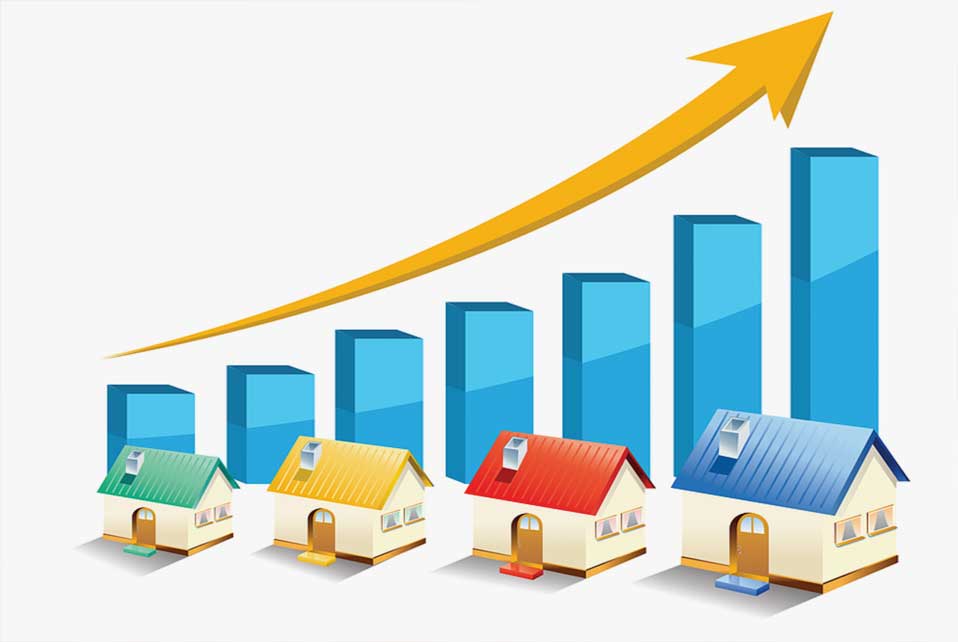Zillow
Zillow predicts that housing market activity will pick up, with more sales and only modest home growth as market becomes unstuck.
Zillow forecasts 2.6% home value growth in 2025, a relatively slow pace that is similar to this year’s growth. For existing home sales, Zillow forecasts 4.3 million in the coming year, up slightly from 4.1 million in 2023 and a projected 4 million in 2024.
While affordability challenges will remain, buyers should expect more homes on the market, meaning more time to consider their options and more leverage in negotiations.
Mortgage rates will fall then rise then fall again. Signs point to mortgage rates easing in 2025, but Zillow predicts continued volatility, with buyers to expect ups and downs throughout the year. Lots of up and down swings, with refinancing sprints during the dips.
Redfin
Redfin predicts mortgage rates will remain in the high-6% range throughout 2025, with the weekly average rate fluctuating throughout the year but averaging around 6.8%.
Investors are anticipating that if President-elect Donald Trump implements a significant portion of his proposed tax cuts and tariffs, and the economy stays strong, the Fed will only cut its policy rate twice in 2025, keeping mortgage rates high. Tariffs could be inflationary, and enacting more tax cuts would increase the U.S. deficit, both of which would push mortgage rates up. High mortgage rates are the second part of the equation that will keep homebuying unaffordable.
On a positive note, Redfin expects existing home sales to tick up next year, ending 2025 at an annualized rate of between 4.1 million and 4.4 million. That represents a year-over-year increase of between 2% and 9%. Redin cites pent up demand and acceptance by buyers of a new higher interest rate as the new norm.
National Association of Realtor
The National Association of REALTORS® forecasts mortgage rates to stabilize near 6% in 2025, likely establishing a new normal.
At this rate, more buyers are expected to come back to the market, boosting activity. When mortgage rates fall below 6.5%, the qualifying income required to purchase a median-priced home drops below $100,000, which is less than the estimated median family income. If rates stabilize around 6%, about 6.2 million households can once again be able to afford median-priced homes, compared to the current constraints with rates near 7%.
While housing shortages remain a long-term constraint, inventory levels are gradually improving and poised to increase further in 2025. This uptick is anticipated to result from a combination of new construction projects and homeowners deciding to list their properties, encouraged by stabilizing mortgage rates and improving market conditions. Lower rates can significantly benefit homebuilders by reducing financing costs and boosting market confidence. This is expected to lead to increased construction and housing starts approaching the historical average annual level of 1.5 million units in the next couple of years.
However, despite these gains, inventory levels are still expected to fall short of pre-pandemic norms, continuing to present challenges for buyers. Home prices will continue to increase in 2025, but at a slower pace compared to previous years, with increases likely to be around 2%.
Our Take: Real Estate in Chicago Booms
In my 23 years of real estate, I have never seen a worse market for buyers than in 2024. Few options, prices through the roof, and mortgage rates making buying the most unaffordable it has ever been. Buyers who were approved for mortgage (and maybe even started home shopping) changed their minds and renewed their lease. Buyers under contract freaked out over minor defects found in home inspections and cancelled their contracts- anxiety over the price and mortgage payment ruled the day instead of simply just requiring sellers to make repairs.
The good news is I see a robust housing market in 2025. Price growth will slow (it could not continue forever), but rates will flatten and inventory and transactions will increase. Great news for buyers and sellers looking to move.
Home sales in the United States have been historically low for a few years, and the market is primed for growth. Sellers have been waiting to move and will see falling rates, even into mid-6% range, as a sign to forge ahead. Sellers and buyers that have been sitting on the fence will accept that a that 6.5% is the new norm and unlikely to fall near 3% range of a few years ago.
Also to consider is 2025 is a post-election year. Going back to 1980, in nine of the last 11 years where there was a presidential election, we saw an increase in homes sold the following year. In the last 32 years, the increase in sales was 5.75% the year after the election.
There will still be niches and locations where buyers will continue to struggle, where demand is sky high with limited supply, particularly for move-in ready, updated homes appealing to first-time buyers on the lower end of the price range.
But overall, we are optimistic for 2025- we predict the Chicago real estate market will break through the current logjam with a huge opportunity for higher market volume for 2025.

